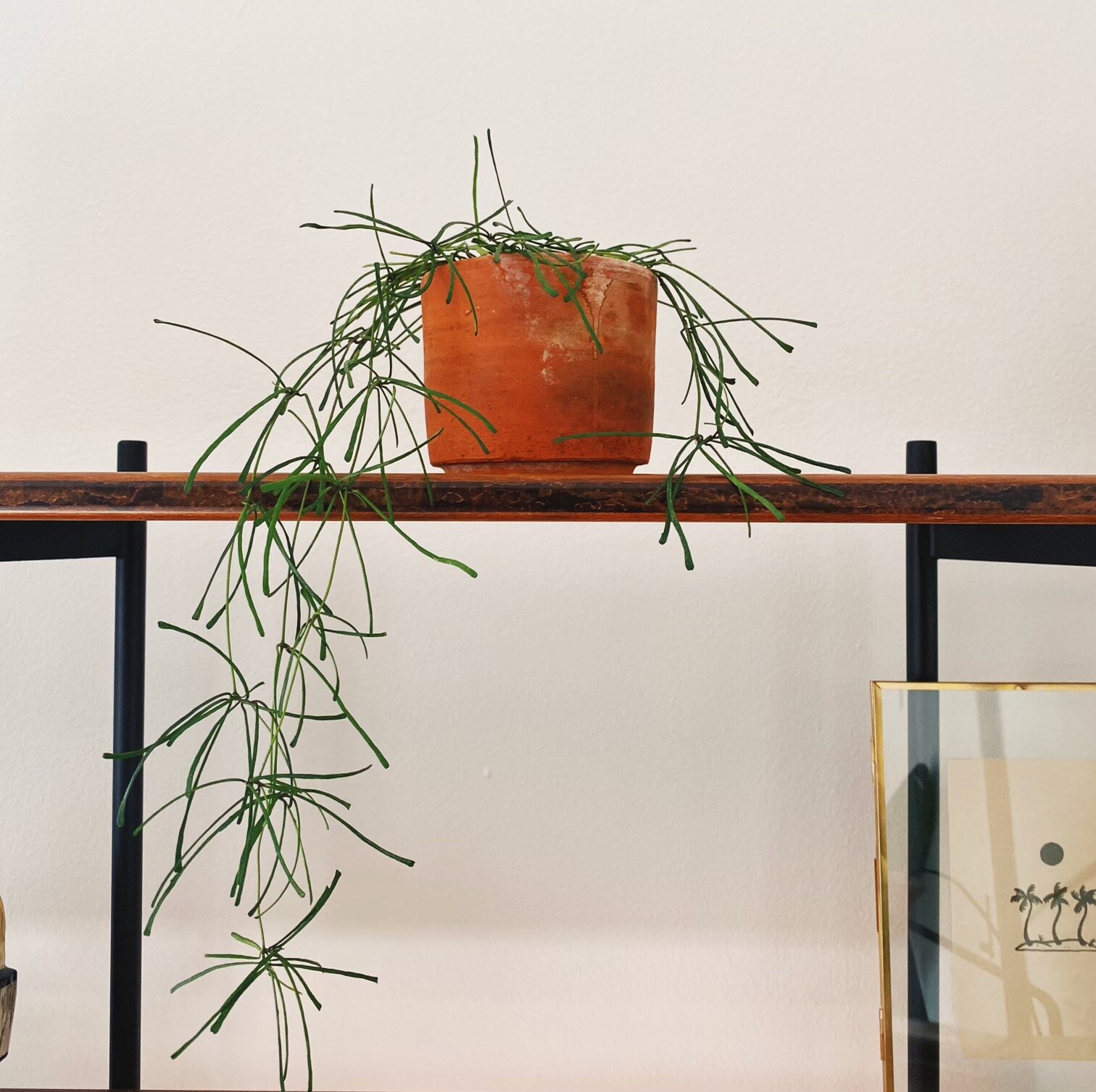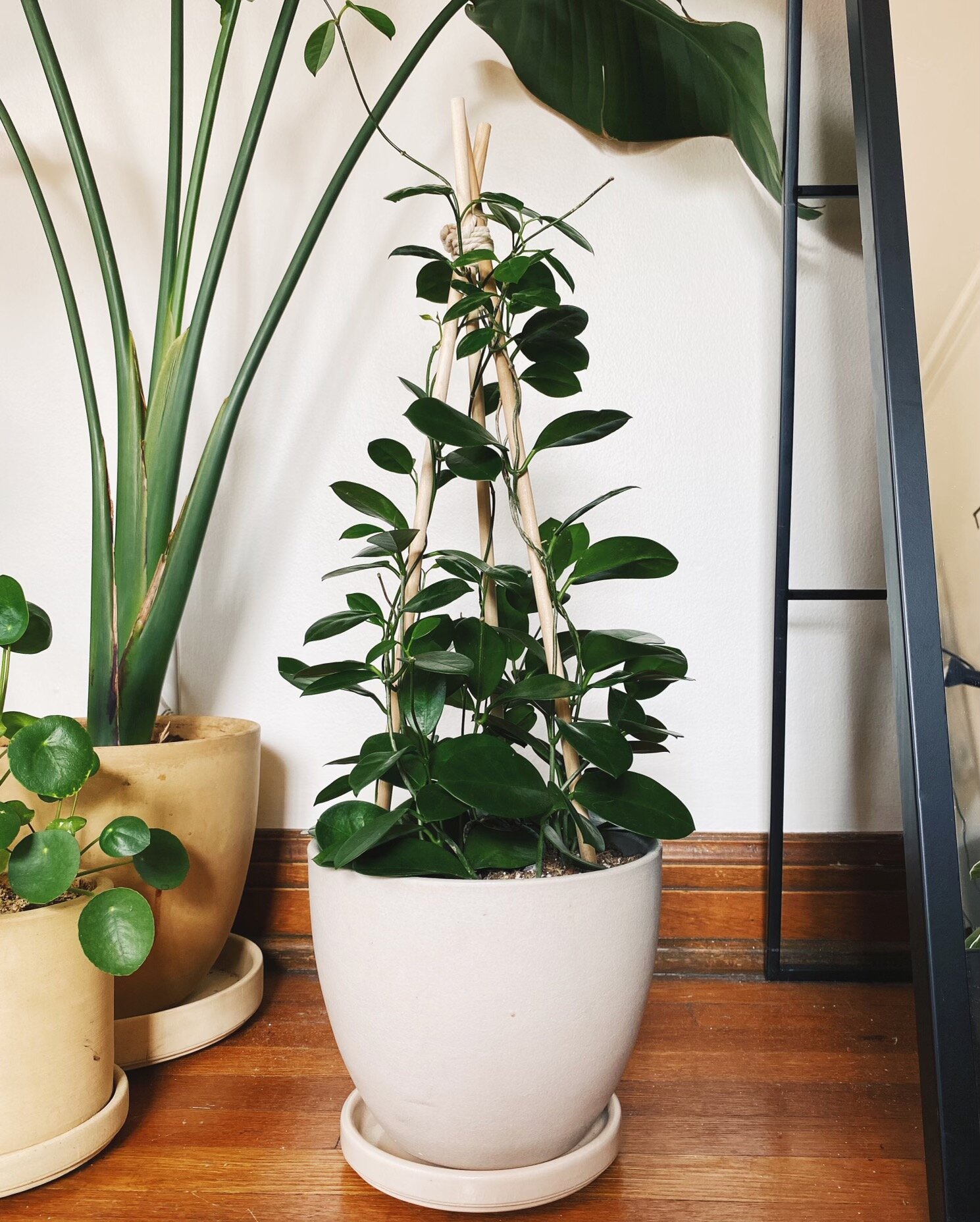Plant Spotlight: Hoyas
Hoyas—also known as “wax plants”—are semi-succulent plants in the same family (Apocynaceae) as more common outdoor plants, like milkweed. In their native environment, Hoyas grow epiphytically on trees or rocky areas and are generally shaded from being in full sun. Hoyas are most known for the clusters of thick, fragrant flowers that bloom when the plant is mature enough. In this article, we’ll be discussing basic information on this genus of plant, including where they’re native to and how to take care of them! Read on to find out more about these fun and generally easygoing plants.
Hoya carnosa
Native Environment and Plant Profile
Hoyas are found mainly in Asiatic countries and in Australia—they grow epiphytically, high up on the trunks of trees, either climbing up the tree by way of their adventitious roots, or they cascade and dangle down. These plants don’t grow terrestrially (in soil) in nature, and because of this, they are accustomed to getting drenched by rain, followed by a brief period of their roots drying out slightly.
Being an epiphytic plant, Hoyas have fairly shallow root systems and won’t require deep planters, nor will they need repotted frequently—some species will be able to happily stay in the same container and growing medium for multiple years.
Most Hoya plants are grown indoors for both their ease of care and the fact that once they’re mature, they produce beautiful clusters of fragrant flowers in an array of colors. Their flowers will bloom from a part of the plant called the peduncle—once a peduncle appears, it should not be trimmed back, as all new flowers will grow from the same peduncle.
Their semi-succulent leaves are well-adapted to holding a small reserve of water should their roots dry out too much in between waterings, and most species’ leaves have a slight fuzziness (pubescence) to them to assist in picking up moisture from their native environments. Indoors, these plants would appreciate extra humidity, but most common species of Hoya will not mind average home humidity.
Hoya pubicalyx
Light Requirements
Since they’re typically found growing in the understory of trees in tropical forests, Hoyas naturally get filtered light in their native environment. To mimic this indoors, Hoya species will do best placed in some direct morning sunlight or a very bright, ambient light. If placed in direct afternoon sunlight, it’s possible that the leaves will get scorched or bleached out by too much intense sunlight. If in too low of light, the internodes (the amount of space between each leaf) will be longer than normal and lead to stems appearing leggy, indicating that the plant is searching for more sunlight.


Soil
Hoyas will thrive in soil that has excellent drainage. This can be achieved by using a mixture of peat moss, orchid bark, horticultural charcoal, pumice, or perlite. The overall goal while mixing the soil is to create a mixture that is airy and chunky and allows water to easily pass through the soil. Hoyas typically won’t perform well in soil that stays wet and holds water around their roots for extended periods of time.
Since Hoyas are epiphytic plants, they don’t necessarily have to be planted in soil in a planter and could easily be grown mounted onto a piece of cork bark or wood using sphagnum moss as a growing medium.


Watering
Hoyas are semi-succulent plants, and because of this, they won’t need watered too often, as their leaves store a reserve of water for the plant. On average, Hoyas could be watered roughly every couple of weeks or whenever their soil dries out thoroughly. Hoya leaves will also pucker slightly as a sign that the plant is ready and able to be watered. When watering your plants, it’s always important to give them a thorough soak until water drains out the bottom of the planter to ensure healthy root development and in turn, a healthy plant.
If they’re grown on cork bark or wood with sphagnum moss as the growing medium, Hoyas should be watered whenever the sphagnum moss surrounding the roots feels dry to the touch, roughly about once a week on average.
Hoya wayetii
Propagating
The easiest way to propagate Hoyas is typically by water propagation—roots can grow anywhere along the stem for most Hoya species, so all that’s needed are a few leaves along with at least a few inches of bare stem to stick in water. Sphagnum moss—due to its ability to dry out relatively quickly after watering—would also serve as a good medium to start new plants in.
Within a few weeks’ time, the plant should begin to grow roots, provided it’s in indirect or bright light. At this point, the cutting could be planted in soil and watered regularly.
With this, we hope you’ve been able to learn something new about the Hoya genus. If you have questions about these plants in general, or one at home, feel free to leave a comment down below or stop into one of our shops to chat with us!
Written by: Egan Thorne
Photos by: Egan Thorne & Sebastian Muñoz



